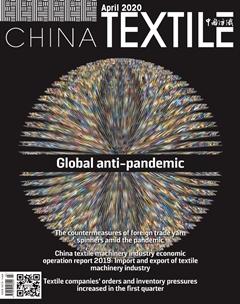The cashmere industry is facing greater challenges in production and consumption
The cashmere industry is a characteristic industry with raw material advantages in Chinas woolen industry. Cashmere products are high-end luxury goods. Under the spread of the current global pandemic of COVID-19, the production and consumption of cashmere products have also encountered huge challenges.
The production load of the cashmere industry is not high, and high-end textile products are more likely to be hit by the pandemic
According to the survey on the resumption of production carried out by the China Wool Textile Association (CWTA), as of April 6, the cashmere enterprises interviewed basically resumed work. Among the resumption enterprises, about 50% of the enterprises had a capacity utilization rate lower than 50% at the time, only 25% of the companys capacity utilization rate reached more than 80%. In the recent past, orders have been cancelled, domestic and foreign market demand has not recovered significantly, cashmere producers have generally underutilized production capacity, and production and operations have been continuously challenged.
Weak market demand, raw material prices continued to fall by more than 30%
According to the information collected and summarized by the CWTA, the cumulative decrease in cashmere prices from January to April has exceeded 30% year-on-year. The difficulties at both ends of supply and demand have caused many adverse effects on the cashmere industry.
The future export situation is not optimistic
According to customs statistics, from January to February, the total export of cashmere raw materials and products was USD 130 million, a year-on-year decrease of 12.4%, which was 12 percentage points less than the total export of woolen products. The export of the two main types of products, cashmere yarn and cashmere sweaters, fell by 11% and 14% respectively. Judging from the export situation, the export situation of cashmere products in January to February is better than that of the wool industry as a whole, and the product decline is significantly smaller than the average decline in industry exports.
Judging from the situation of the exporting region, the export of cashmere products to ASEAN showed a slight increase, and the export value increased by 3% year-on-year. Other major exporting regions, such as the European Union, the United States, Japan, Hong Kong and South Korea, have shown declines of varying magnitudes. Exports to the EU region, the most important market, fell by 9%. On the whole, the export situation of cashmere products in the first two months of this year is better than the level of the wool industry.
However, since March, the European Union, the most important exporter of cashmere products, has been deeply affected by the growing pandemic situation. In the market since March, high-end apparel brands have been more significantly impacted, and cashmere products as one of the most high-end textile and apparel products, the export situation in the first half of the year and the whole year is likely to intensify risks.
At present, the international market is continuously affected by the pandemic situation, and domestic consumption shows no obvious signs of recovery. The high-end consumer product market, where the cashmere industry is located, is under greater pressure due to the global economic weakness and downward trend. From the point of view of export, cashmere products have a certain degree of pressure resistance, but under the continued deepening of the situation pressure, how to continue to resist market pressure and safely and steadily overcome this crisis is a common issue we face.
- China Textile的其它文章
- aining China International Home Textiles Cloud Expo goes live this year,launching a new“cloud”model
- Strike hard to maintain the order of the melt blown nonwovens market
- A 500K Ton/Year PET Project Breaks Ground in Korla,Bayingol Mongolia of Xinjiang
- A Glimpse of Industrial Park in Xinjiang amid Virus Fighting
- From January to March,the profits of industrial enterprises above designated size decreased by 36.7%
- Manmade fiber industry hit hard with profits fallout by 75%

